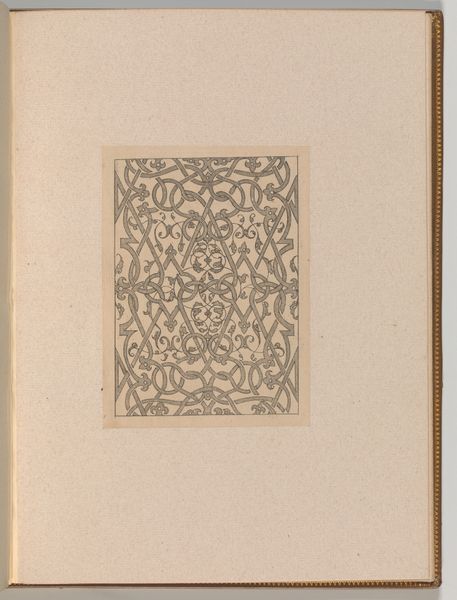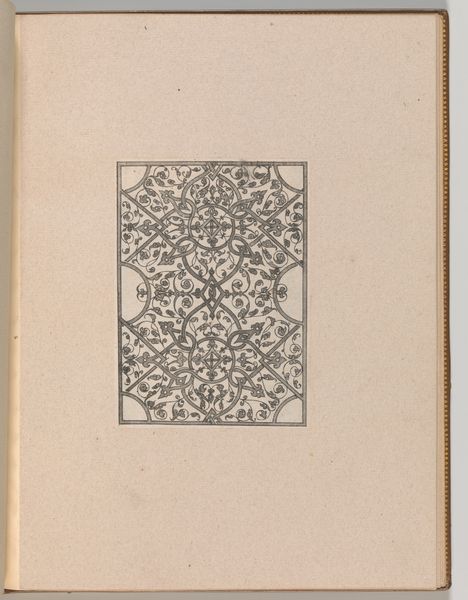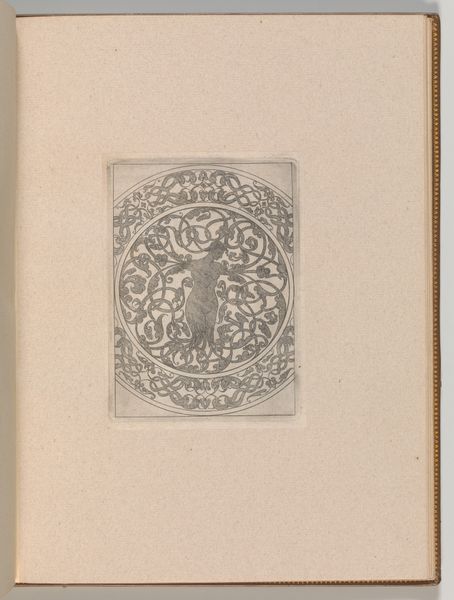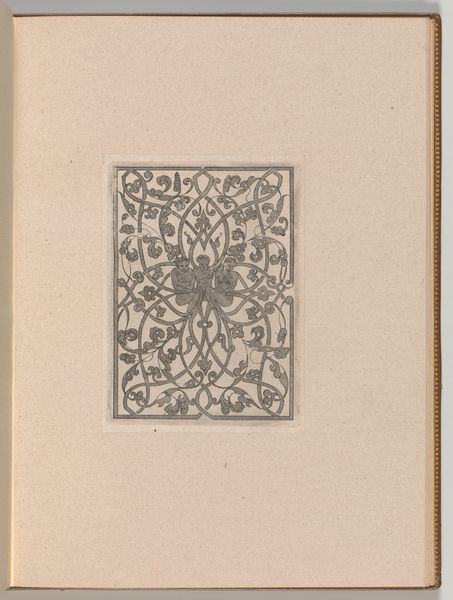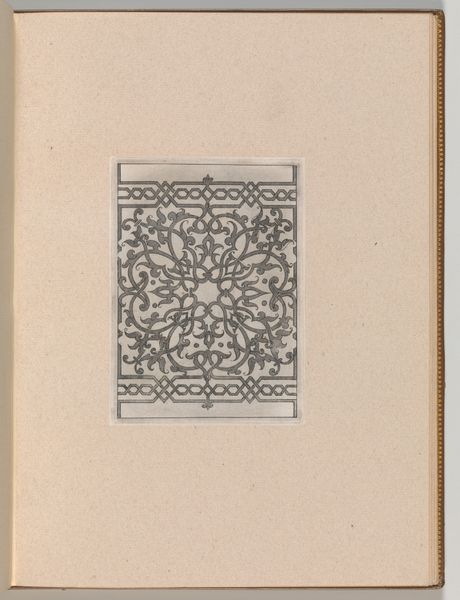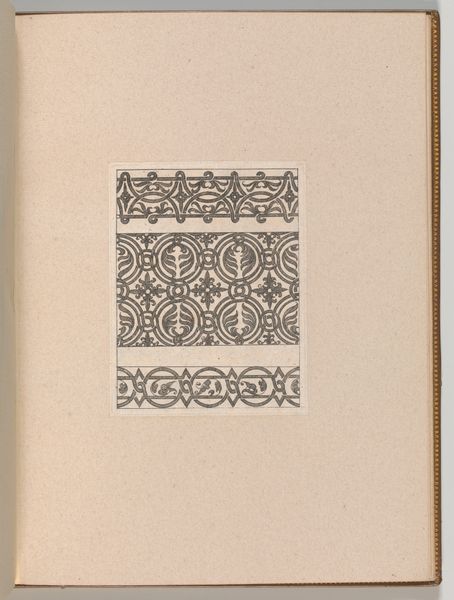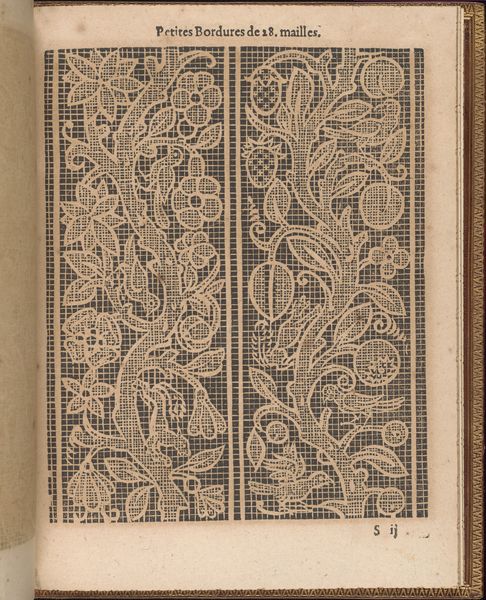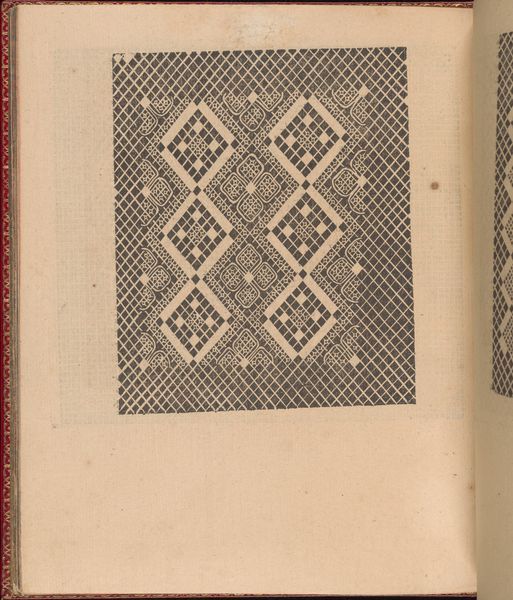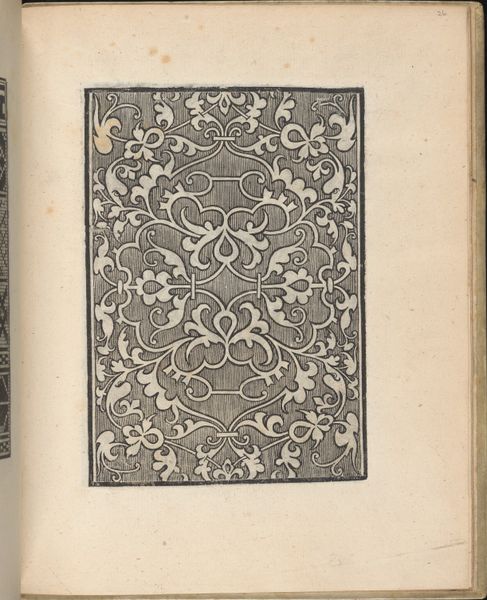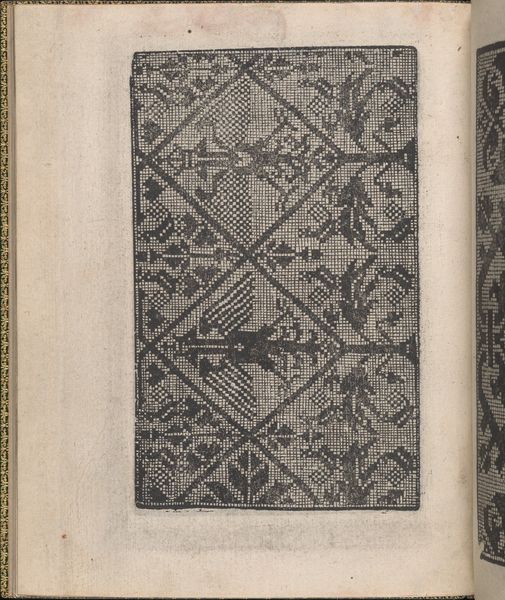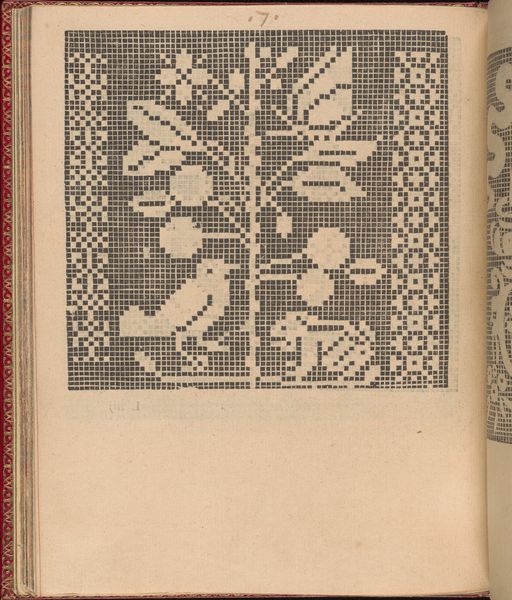
Copies after the 'Livre contenant passement de moresques' (plate 5) 1800 - 1900
0:00
0:00
drawing, ornament, print, paper, engraving
#
drawing
#
ornament
# print
#
paper
#
11_renaissance
#
geometric
#
line
#
history-painting
#
engraving
Dimensions: Sheet: 4 13/16 × 3 9/16 in. (12.2 × 9 cm) Plate: 4 1/2 × 3 5/16 in. (11.5 × 8.4 cm) Overall: 10 1/16 × 7 7/8 in. (25.5 × 20 cm)
Copyright: Public Domain
This is plate five from 'Book Containing Moorish Designs,' by Jacques Androuet Du Cerceau, made sometime in the 16th century. During this period, European artists often appropriated and reinterpreted motifs from other cultures, reflecting the complexities of cross-cultural exchange and power dynamics. In this print, the 'moresque' designs—a European term for 'Moorish' or Islamic-inspired ornament—speak to a fascination with the 'exotic' and 'other.' The presence of these designs in a European pattern book raises questions about cultural appropriation and the historical construction of identity. How were these patterns understood by Du Cerceau's contemporaries, and what did they signify in the context of 16th-century Europe? Were they merely decorative elements, or did they carry deeper associations with the Islamic world? How do you feel about the use of cultural symbols in art? Du Cerceau's print invites us to consider the historical context in which cultural exchange takes place. The artist opens a space for reflection on the complexities of cultural representation, prompting us to reflect on the power dynamics inherent in the act of borrowing and reinterpreting artistic traditions.
Comments
No comments
Be the first to comment and join the conversation on the ultimate creative platform.
